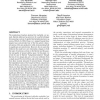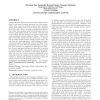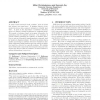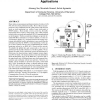55 search results - page 10 / 11 » worm 2004 |
CCS
2004
ACM
13 years 10 months ago
2004
ACM
Address-space randomization is a technique used to fortify systems against bu
er over
ow attacks. The idea is to introduce arti
cial diversity by randomizing the memory location o...
IMC
2010
ACM
13 years 2 months ago
2010
ACM
The monitoring of packets destined for reachable, yet unused, Internet addresses has proven to be a useful technique for measuring a variety of specific Internet phenomenon (e.g.,...
IMC
2004
ACM
13 years 10 months ago
2004
ACM
Current intrusion detection and prevention systems seek to detect a wide class of network intrusions (e.g., DoS attacks, worms, port scans) at network vantage points. Unfortunatel...
ISSTA
2004
ACM
13 years 10 months ago
2004
ACM
In today’s interconnected world, malware, such as worms and viruses, can cause havoc. A malware detector (commonly known as virus scanner) attempts to identify malware. In spite...
WS
2004
ACM
13 years 10 months ago
2004
ACM
Many studies on measurement and characterization of wireless LANs (WLANs) have been performed recently. Most of these measurements have been conducted from the wired portion of th...




